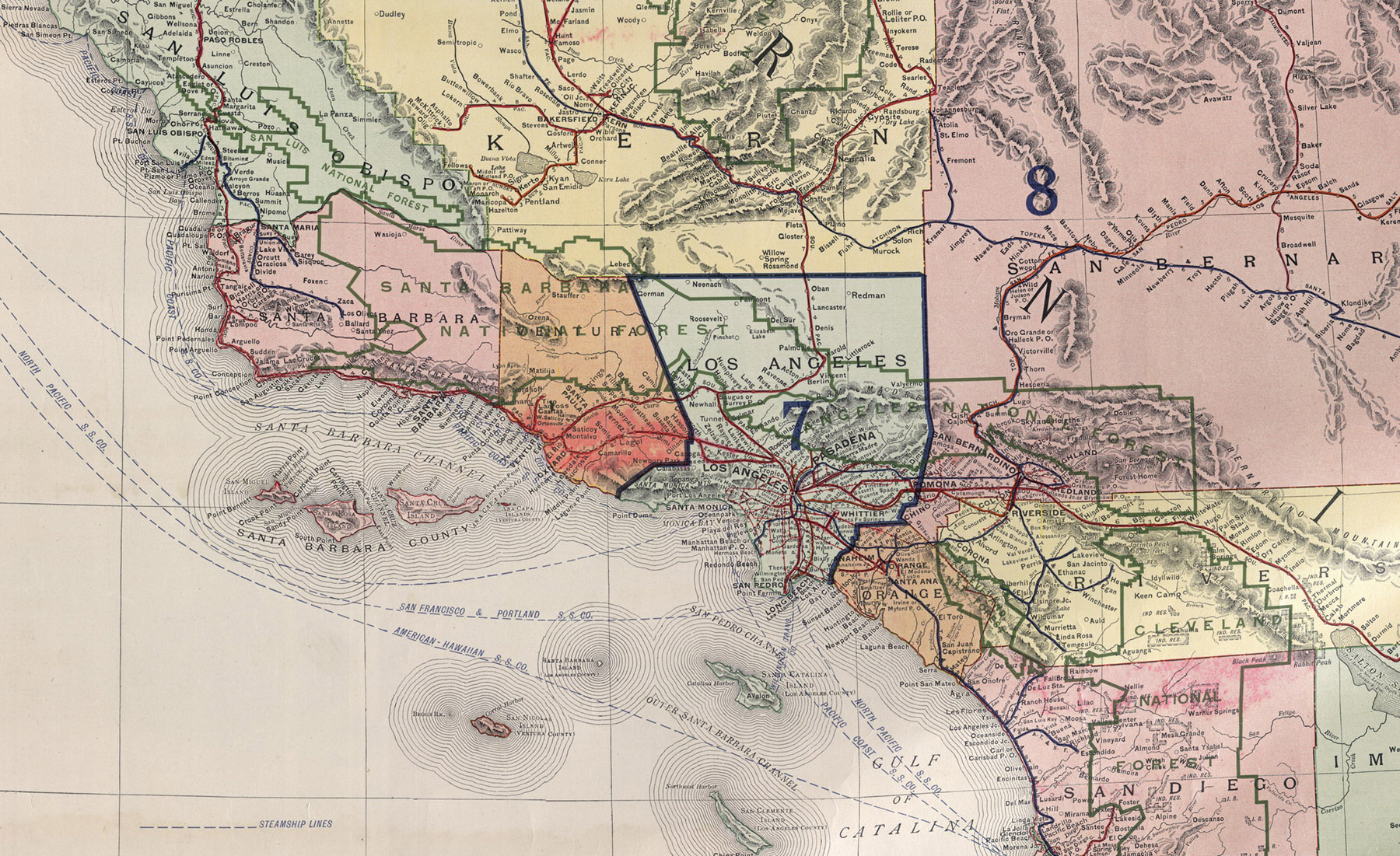
#86 Solstice Canyon
Solstice Canyon is a beautiful spot in the Santa Monica Mountains. A 2 mile round trip hike takes you into the canyon to the ruins of the Roberts Ranch House which was designed by Paul R. Williams, famous African American Architect in 1952. The house blended in with its natural surroundings and can be discovered by its blueprint foundation today. A nearby waterfall is also a highlight that can be seen flowing all year long.
#85 Generals Highway
The Generals Highway is the scenic drive that connects Sequoia & Kings Canyon National Parks. It is named after the two largest trees in the world, General Sherman & General Grant Sequoias. The road winds through giant sequoia groves and meadows in the Sierra Nevada and provides sweepings mountain vistas. Generals Highway was dedicated on June 23, 1935 and welcomed 669 cars with 2,488 people. Drive careful on this winding, narrow and steep scenic drive.
#84 Mandalay Beach
Mandalay Beach in Oxnard is a pristine sandy beach with rolling sand dunes. The beach also preserves central coast wetlands on the Oxnard Plain. Commanding views of the Channel Islands can be seen while enjoying a perfect sunset from this relaxing beach.
#83 Oak of the Golden Dream
The Oak of the Golden Dream is the first original discovery of Gold in today's Placerita Canyon State Park. Six years before the California Gold Rush, a man named Francisco Lopez, brother of nearby Mission San Fernando Rey de España, had a dream of Gold while napping under an oak tree. After the dream, he picked wild onions and discovered gold in its roots. It became the first documented gold site in California. Marking the famous March 9th 1842 discovery is the surviving tree and the California Historical Landmark No. 168 Plaque.
#82 Barker Dam
Barker Dam in Joshua Tree National Park is a man-made reservoir created in 1900 by early cattlemen. It has become a watering hole for Desert Bighorn Sheep. The giant boulders as well as nearby petroglyphs make for a great 1.3 mile loop hike. The dam is also listed on the National Register of Historic Places.
#81 Leo Carrillo Ranch Historic Park
Leo Carrillo Ranch Historic Park or Rancho De Los Kiotes is the vacation retreat of famous Hollywood actor Leo Carrillo. He designed his ranch after the Spanish Haciendas of his ancestors. At only $17 an acre, the ranch once contained 2,538 acres. The property can be toured today and includes gardens and adobe buildings as well as a stable, barn and reflecting pool. The ranch is listed on the National Register of Historic Places and is also a California Landmark.
#80 Painted Rock
Painted Rock in the Carrizo Plain National Monument is an amazing pictograph rock art site. Thousands of years old, these pictographs were created by the Chumash, Salinan and Yokut Natives. The pigments were created from a yucca shrub while they were painted using brushes made of rodent hair. Although the meanings are now lost, the art remains sacred. Access to the site is via a rough dirt road and limited to guided tours from March to May and is a 1.4 mile hike. The rest of the year you need to register online to gain access to this federally protected site.
Pictograph/Petroglpyh Etiquette: Take many photos but DO NOT TOUCH. Oils from our hands can destroy forever. Do not alter the rock art in any way or form and please stay on the trail to protect the fragile desert ecosystem.
#79 Carpinteria Tar Pits
Tar Pits Park, part of Carpinteria State Beach in Carpinteria, is a natural asphalt tar pit lake on the Central Coast. There are only 5 known in the world with three in Southern California. The Native Chumash have used the tar to waterproof their canoes for thousands of years giving Carpinteria its name 'carpentry shop'. Hundreds of fossilized mammals have also been found here frozen in time.
#78 Big Bear Lake
Big Bear Lake is a four season destination high up in the San Bernardino Mountains. With a population around 5,000 and an elevation of 6,752 feet, Big Bear is the perfect escape where fresh alpine air and recreation await. High up, yet surrounded by deep valleys below, Big Bear is also referred to as an 'Island in the Sky'.
Serrano Native Americans inhabited these mountains for thousands of years and called it 'Yuhaviat' which means 'Pine Place'. They lived alongside wild Grizzly Bears which covered California. The Gold Rush eventually caught up to the region and mining occurred here from 1860 to 1875. In the 1950's, Ski Resorts became the main draw leading Big Bear into the resort destination it is today.
#77 Malaga Cove
Malaga Cove is a hidden cove in Rancho Palos Verdes. The southern edge is rocky shore which opens up to the sandy Los Angeles County stretch. The surrounding bluffs provide seclusion and make for an enjoyable escape from city life. During the winter rains, the hills turn a beautiful shade of green.


























